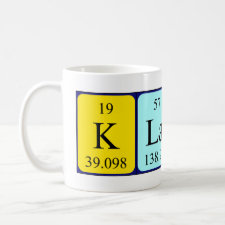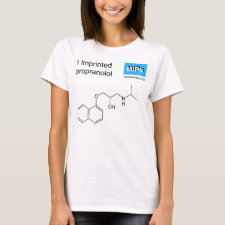
Authors: Yoshimatsu K, Reimhult K, Krozer A, Mosbach K, Sode K, Ye L
Article Title: Uniform molecularly imprinted microspheres and nanoparticles prepared by precipitation polymerization: The control of particle size suitable for different analytical applications.
Publication date: 2007
Journal: Analytica Chimica Acta
Volume: 584
Issue: (1)
Page numbers: 112-121.
DOI: 10.1016/j.aca.2006.11.004
Alternative URL: http://www.sciencedirect.com/science/article/B6TF4-4M9RM3D-7/2/63e2756f2c605fa1a76cf098931dfd28
Abstract: Molecularly imprinted polymers (MIPs) are being increasingly used as selective adsorbents in different analytical applications. To satisfy the different application purposes, MIPs with well controlled physical forms in different size ranges are highly desirable. For examples, MIP nanoparticles are very suitable to be used to develop binding assays and for microfluidic separations, whereas MIP beads with diameter of 1.5-3 μm can be more appropriate to use in new analytical liquid chromatography systems. Previous studies have demonstrated that imprinted microspheres and nanoparticles can be synthesized using a simple precipitation polymerization method. Despite that the synthetic method is straightforward, the final particle size obtained has been difficult to adjust for a given template. In this work, we initiated to study new synthetic conditions to obtain MIP beads with controllable size in the nano- to micro-meter range, using racemic propranolol as a model template. Varying the composition of the cross-linking monomer allowed the particle size of the MIP beads to be altered in the range of 130 nm to 2.4 μm, whereas the favorable binding property of the imprinted beads remained intact. The chiral recognition sites were further characterized with equilibrium binding analysis using tritium-labeled (S)-propranolol as a tracer. In general, the imprinted sites displayed a high chiral selectivity: the apparent affinity of the (S)-imprinted sites for (S)-propranolol was 20 times that of for (R)-propranolol. Compared to previously reported irregular particles, the chiral selectivity of competitive radioligand binding assays developed from the present imprinted beads has been increased by six to seven folds in an optimized aqueous solvent
Template and target information: propranolol
Author keywords: molecular imprinting, precipitation polymerization, propranolol, assay, nanoparticles



Join the Society for Molecular Imprinting

New items RSS feed
Sign-up for e-mail updates:
Choose between receiving an occasional newsletter or more frequent e-mail alerts.
Click here to go to the sign-up page.
Is your name elemental or peptidic? Enter your name and find out by clicking either of the buttons below!
Other products you may like:
 MIPdatabase
MIPdatabase









